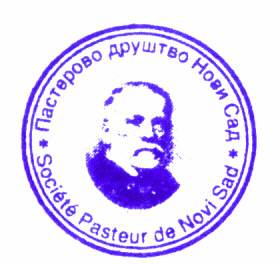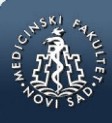md-medicaldata
Main menu:
- Naslovna/Home
- Arhiva/Archive
- Godina 2024, Broj 1
- Godina 2023, Broj 3
- Godina 2023, Broj 1-2
- Godina 2022, Broj 3
- Godina 2022, Broj 1-2
- Godina 2021, Broj 3-4
- Godina 2021, Broj 2
- Godina 2021, Broj 1
- Godina 2020, Broj 4
- Godina 2020, Broj 3
- Godina 2020, Broj 2
- Godina 2020, Broj 1
- Godina 2019, Broj 3
- Godina 2019, Broj 2
- Godina 2019, Broj 1
- Godina 2018, Broj 4
- Godina 2018, Broj 3
- Godina 2018, Broj 2
- Godina 2018, Broj 1
- Godina 2017, Broj 4
- Godina 2017, Broj 3
- Godina 2017, Broj 2
- Godina 2017, Broj 1
- Godina 2016, Broj 4
- Godina 2016, Broj 3
- Godina 2016, Broj 2
- Godina 2016, Broj 1
- Godina 2015, Broj 4
- Godina 2015, Broj 3
- Godina 2015, Broj 2
- Godina 2015, Broj 1
- Godina 2014, Broj 4
- Godina 2014, Broj 3
- Godina 2014, Broj 2
- Godina 2014, Broj 1
- Godina 2013, Broj 4
- Godina 2013, Broj 3
- Godina 2013, Broj 2
- Godina 2013, Broj 1
- Godina 2012, Broj 4
- Godina 2012, Broj 3
- Godina 2012, Broj 2
- Godina 2012, Broj 1
- Godina 2011, Broj 4
- Godina 2011, Broj 3
- Godina 2011, Broj 2
- Godina 2011, Broj 1
- Godina 2010, Broj 4
- Godina 2010, Broj 3
- Godina 2010, Broj 2
- Godina 2010, Broj 1
- Godina 2009, Broj 4
- Godina 2009, Broj 3
- Godina 2009, Broj 2
- Godina 2009, Broj 1
- Supplement
- Galerija/Gallery
- Dešavanja/Events
- Uputstva/Instructions
- Redakcija/Redaction
- Izdavač/Publisher
- Pretplata /Subscriptions
- Saradnja/Cooperation
- Vesti/News
- Kontakt/Contact
 Pasterovo društvo
Pasterovo društvo
- Disclosure of Potential Conflicts of Interest
- WorldMedical Association Declaration of Helsinki Ethical Principles for Medical Research Involving Human Subjects
- Committee on publication Ethics
CIP - Каталогизација у публикацији
Народна библиотека Србије, Београд
61
MD : Medical Data : medicinska revija = medical review / glavni i odgovorni urednik Dušan Lalošević. - Vol. 1, no. 1 (2009)- . - Zemun : Udruženje za kulturu povezivanja Most Art Jugoslavija ; Novi Sad : Pasterovo društvo, 2009- (Beograd : Scripta Internacional). - 30 cm
Dostupno i na: http://www.md-medicaldata.com. - Tri puta godišnje.
ISSN 1821-1585 = MD. Medical Data
COBISS.SR-ID 158558988
BREASTFEEDING BARRIERS AND INFLUENCE OF DIFFERENT FACTORS ON BREASTFEEDING BARRIERS IN INDJIJA
/
PREPREKE DOJENJA I UTICAJ RAZLIČITIH FAKTORA NA PREPREKE DOJENJA U INĐIJI
Authors
Tanja Rozek Mitrović1, Vesna Petrović1
1Primary Health Care Center „Dr. Milorad Mika Pavlović“ Indjija, Serbia/
Dom zdravlja „dr Milorad Mika Pavlović“ Inđija, Srbija
UDK: 613.953.11(497.113)
618.63(497.113)
The paper was received / Rad primljen: 20.08.2021.
Accepted / Rad prihvaćen: 10.09.2021.
Correspondence to:
dr spec. pedijatrije Tanja Rožek Mitrović,
ul. Laze Kostica 18, 22320 Indjija,
Phone: 381 63 8054585
e-mail: rozekt@gmail.com
Abstract
Backgraund: The World Health Organization and American Academy of Paediatrics have recommended exclusive breastfeeding until the age of 6 months. Unfortunately, there are many barriers to breastfeeding, biological, psychological, social, economic. The objective of this study was to assess the breastfeeding barriers of mothers in a relationship to different factors. Material and Methods: This study uses data routinely collected during health visits to the pediatrician, completing the survey by the mother, in Indjija, suburban area in Serbia. In this study, 1089 surveys were processed. Results: The most common answers to the question about breastfeeding barriers are insufficient milk supply (51%) and returning to work (11.4%). Other reasons to stop breastfeeding: infant disease (2.5%), mother disease (8.7%), mastitis and retracted nipples (2.4%), feeding the baby an infantile formula for better progress and longer baby sleep, next pregnancy are in a small percentage. Conclusion: The biggest breastfeeding obstacle is insufficient milk supply, returning to work and seldom it is the disease of the baby or mother. The most important thing for the future mother is to set up education about the techniques and advantages of breastfeeding prenatally in the counseling center for pregnant women and to continue that education in the development counseling center with the maximum support of the family and health workers.
Keywords:
breastfeeding barriers, breastfeeding problems, insufficient milk supply, infant nutrition
Sažetak
Uvod: Svetska zdravstvena organizacija i Američka akademija pedijatrije preporučuju isključivo dojenje do navršenih 6 meseci. Nažalost, postoji mnogo prepreka dojenju, koje možemo razvrstati u biološke, psihološke, socijane, ekonomske. Cilj ove studije bio je prepoznati prepreke za dojenje u odnosu na različite faktore. Materijal i metode: Ova studija je koristila podatke koji su prikupljeni anketom popunjenom od strane majke tokom zdravstvenih poseta pedijatru u Inđiji, prigradskom području u Srbiji. U ovoj studiji obrađeno je 1089 anketa. Rezultati: Najveći broj odgovora na pitanje prepreka dojenju je nedostatak mleka (51%) i vraćanje na posao (11,4%). Ostali razlozi prestanka dojenja: bolest bebe (2,5%), bolest majke (8,7%), mastitis i uvučene bradavice (2,4%), hranjenje bebe infantilnom formulom zbog boljeg napredovanja i dužeg spavanja bebe, druga trudnoća nalazi se u malom procentu. Zaključak: Najveću prepreku dojenju predstavlja nedovoljnost sekrecije mleka koju majke osećaju, vraćanje na posao a manje je to bolest bebe ili majke. Najvažnije je da buduća majka započne edukaciju o tehnikama i prednosti dojenja prenatalno u savetovalištu za trudnice i da nastavi tu edukaciju u razvojnom savetovalištu uz maksimalnu podršku porodice i zdravstvenih radnika.
Ključne reči:
prepreke dojenja, problemi pri dojenju, nedovoljna sekrecija mleka, ishrana odojčeta
References:
- Khalifa DS, Glavin K, Bjertness E, Lien L. Determinants of postnatal depression in Sudanese women at 3 months postpartum: a cross-sectional study. BMJ open. 2016;6:e009443.doi: 10.1136/bmjopen-2015-009443;Available: https://www.ncbi.nlm.nih.gov/pmc/articles/PMC4800153/
- American Association of Pediatrics. AAP reaffirms breastfeeding guidelines 2012.; American Academy of Pediatrics. Available: https://www.healthychildren.org/
- The World Health Organization, Report of the Expert Consultation. Geneva, Switzerland: The optimal duration of exclusive breastfeeding. Report reference number: WHO/NHD/01.09./28-30 March 2001. Available: https://apps.who.int/nutrition/publications/infantfeeding/WHO_NHD_01.08/en/index.html
- Uredba o Nacionalnom programu podrške dojenju, porodičnoj i razvojnoj nezi novorođenčeta; “Službeni glasnik RS”, br 53 od 11.07.2018.godine. Available: http://www.pravno-informacioni-sistem.rs/SlGlasnikPortal/eli/rep/sgrs/vlada/uredba/2018/53/1
- Centers for Disease Control and Prevention; Breastfeeding Report Card; United States, 2018; Available: https://www.cdc.gov/breastfeeding/data/reportcard.htm
- Brodribb W. and the Academy of Breastfeeding Medicine; ABM Clinical Protocol #9: Use of Galactogogues in Initiating or Augmenting Maternal Milk Production, Second Revision 2018; BREASTFEEDING MEDICINE Volume 13, Number 5, 2018 ª Mary Ann Liebert, Inc. doi: 10.1089/bfm.2018.29092.wjb; Available: https://abm.memberclicks.net/assets/DOCUMENTS/PROTOCOLS/9-galactogogues-protocol-english.pdf
- Rollins NC, Bhandari N, Hajeebhoy N, HortonS, Lutter C, Martines J. et al .Why invest, and what it will take to improve breastfeeding practices? The Lancet 2016;387:491–504.PMID: 26869576; doi:10.1016/S0140-6736(15)01044-2; Available: https://pubmed.ncbi.nlm.nih.gov/26869576/
- SharmaIK, Byrne A; Early initiation of breastfeeding: a systematic literature review of factors and barriers in South Asia; International Breastfeeding Journal, volume 11, Article number: 17 (2016) doi:10.1186/s13006-016-0076-7;Available: https://doi.org/10.1186/s13006-016-0076-7
- Wanjohi M, Griffiths P, Wekesah F, Muriuki P, Muhia N, Musoke RN et al., “Sociocultural factors influencing breastfeeding practices in two slums in Nairobi, Kenya,” International Breastfeeding Journal, vol. 12, no. 1, p. 5, 2016.doi: 10.1186/s13006-016-0092-7, Available:https://doi.org/10.1186/s13006-016-0092-7
- U.S. Department of Health and Human Services. The Surgeon General’s Call to Action to Support Breastfeeding. Washington, DC: U.S. Department of Health and Human Services, Office of the Surgeon General; 2011. PMID: 21452448, Available: http://www.surgeongeneral.gov.
- LauerEA, ArmentiK, Henning M, and Sirois L; Identifying Barriers and Supports to Breastfeeding in the Workplace Experienced by Mothers in the New Hampshire Special Supplemental Nutrition Program for Women, Infants, and Children Utilizing the Total Worker Health Framework; Int J Environ Res Public Health. 2019 Feb; 16(4): 529. PMID: 30781764; doi: 10.3390/ijerph16040529; Available: https://pubmed.ncbi.nlm.nih.gov/30781764/
- Sandhi A, Lee G.T, Chipojola R. et al. The relationship between perceived milk supply and exclusive breastfeeding during the first six months postpartum: a cross-sectional study. Int Breastfeed J 15, 65 (2020). Doi:10.1186/s13006-020-00310-y, Available: https://doi.org/10.1186/s13006-020-00310-y
- DeMaria A.L, Ramos-Ortiz J, Basile K; Breastfeeding trends, influences, and perceptions among Italian women: a qualitative study, (2020) International Journal of Qualitative Studies on Health and Well-being, 15:1, doi: 10.1080/17482631.2020.1734275, Available: https://www.tandfonline.com/doi/full/10.1080/17482631.2020.1734275
- Thomas, Jessy V, Barriers to Exclusive Breastfeeding Among Mothers During the First Four Weeks Postpartum (2016). Walden Dissertations and Doctoral Studies. 2197. Available:
https://scholarworks.waldenu.edu/dissertations/2197 - Degefa N, Tariku B, Bancha T, Amana G, Hajo A, Kusse Y; Breast Feeding Practice: Positioning and Attachment during Breast Feeding among Lactating Mothers Visiting Health Facility in Areka Town, Southern Ethiopia; International Journal of Pediatrics, 2019; doi:10.1155/2019/8969432; Available:https://doi.org/10.1155/2019/8969432
- Wanjohi M, Griffiths P, Wekesah F.et al.,Sociocultural factors influencing breastfeeding practices in two slums in Nairobi, Kenya, International Breastfeeding Journal, vol. 12, no. 1, p. 5, 2016. doi:10.1186/s13006-016-0092-7, Available:https://doi.org/10.1186/s13006-016-0092-7
- Lenja A, Demissie T, Yohannes B, and Yohannis M; Determinants of exclusive breastfeeding practice to infants aged less than six months in Offa district, Southern Ethiopia: A cross-sectional study, International Breastfeeding Journal, vol. 11, no. 1, article 32, 2016. doi: 10.1186/s13006-016-0091-8; Available: https://doi.org/10.1186/s13006-016-0091-8
- Hendaus M.A, Alhammadi A.H, Khan S, Osman S, Hamad A; Breastfeeding rates and barriers: a report from the State of Qatar;Int J Womens Health. 2018; 10: 467–475. doi: 10.2147/IJWH.S161003; Available:https://doi.org/10.2147/IJWH.S161003
- 19.Tang K, Wang H, Tan SH, et al;Association between maternal education and breast feeding practices in China: a population-based cross-sectional study BMJ Open 2019; 9:e028485. doi: 10.1136/bmjopen-2018-028485; Available: https://bmjopen.bmj.com/content/9/8/e028485.info
- Liben ML, Yesuf EM. Determinants of early initiation of breastfeeding in Amibara district, Northeastern Ethiopia: a community based cross-sectional study. Int Breastfeed J. 2016;11:7. doi:10.1186/s13006-016-0067-8, Available: https://doi.org/10.1186/s13006-016-0067-8
- Khasawneh W, Khasawneh A.A; Predictors and barriers to breastfeeding in north of Jordan: could we do better? Int Breastfeed J 12, 49 (2017). Doi:10.1186/s13006-017-0140-y; Available:https://doi.org/10.1186/s13006-017-0140-y
- Budiati T, Setyowati; The influence culture and maternal care on exclusive breastfeeding practice in post caesarean section mothers; Enferm Clin 2019 Sep;29 Suppl 2:808-814. doi: 10.1016/j.enfcli.2019.04.121. Available:https://pubmed.ncbi.nlm.nih.gov/31311735/
- World Health Organization & United Nations Children's Fund (UNICEF). (2018). Implementation guidance: protecting, promoting and supporting breastfeeding in facilities providing maternity and newborn services: the revised baby-friendly hospital initiative. World Health Organization. Available: https://apps.who.int/iris/handle/10665/272943. License: CC BY-NC-SA 3.0 IGO
- Rožek Mitrović T, Višnjevac D, Petrović V. Uticaj različitih faktora na dužinu dojenja u Inđiji. Prev Ped. 2021; 7(1-2):51-57. Available: http://casopis.preventivnapedijatrija.rs/index.php/uticaj-razlicitih-faktora-na-duzinu-dojenja-u-indiji
PDF: 02-MD-Vol 13 No 3-4 Sept-Dec 2021_Rožek Mitrović T. and Petrović V.pdf
 Medicinski fakultet
Medicinski fakultet